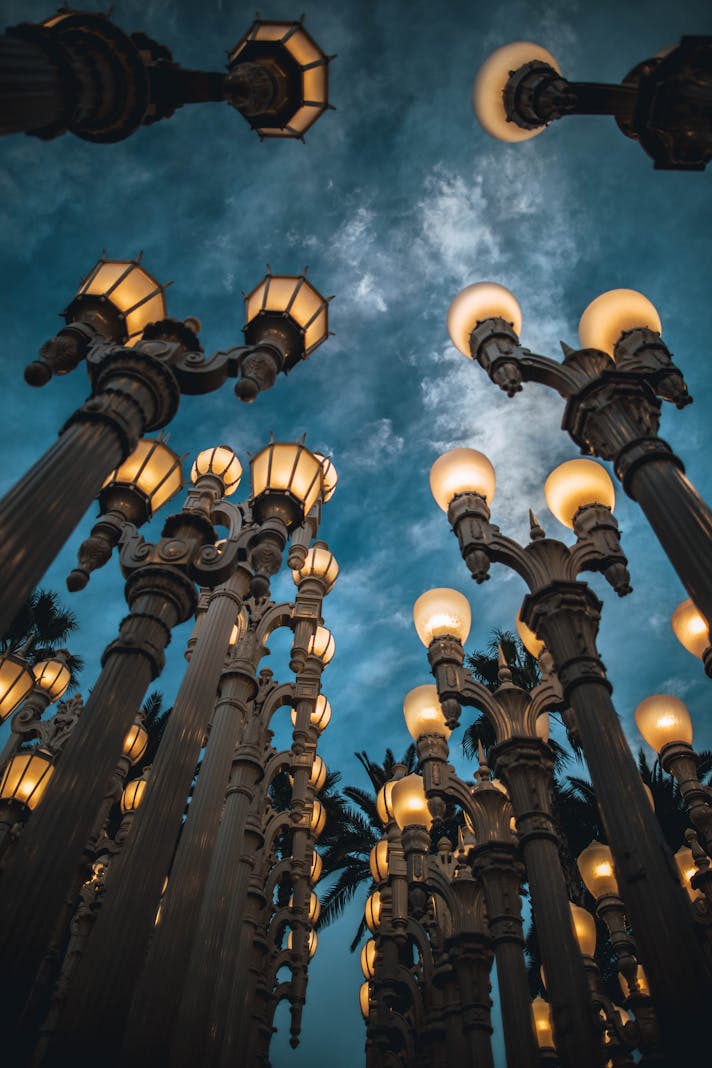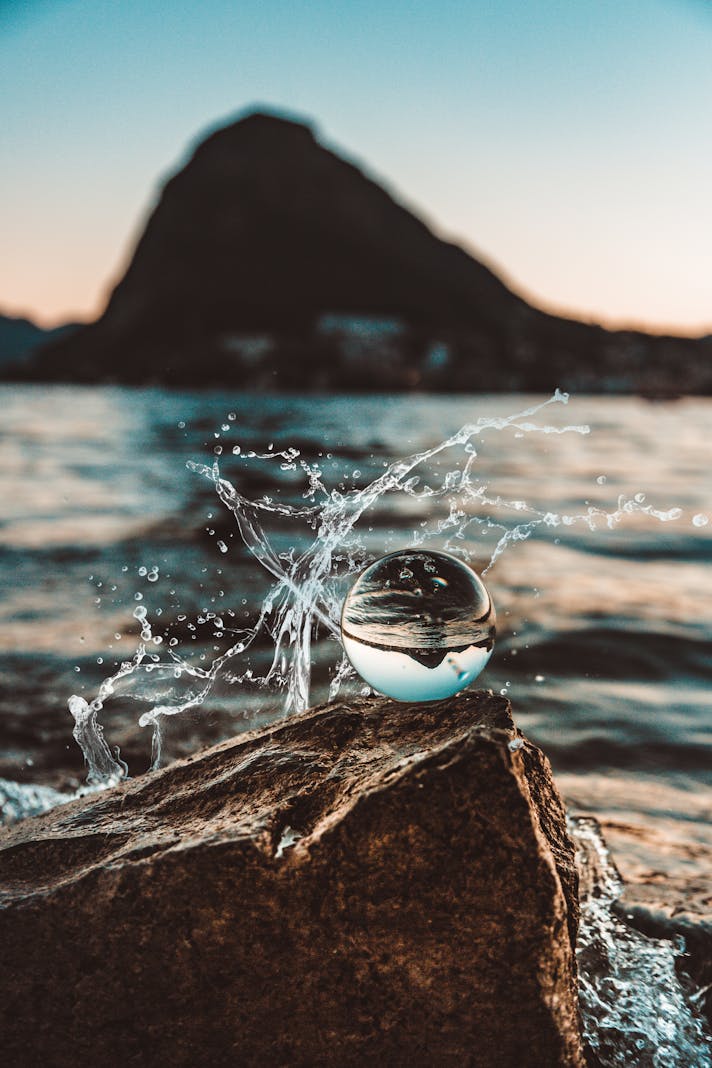Long Beach Lighthouses

California may not be the state boasting the greatest number of lighthouses (that honor, strangely enough, goes to Michigan), but it certainly has its share of unusual lighthouse stories. Visitors to Long Beach can experience some truly important maritime history, and can also photograph scenic buildings, but there’s a catch – the two aren’t the same. The picturesque structures have no historic value, while the true workhorse is, well, considered one of the ugliest lighthouses around. Here’s an unusual pilgrimage for lighthouse buffs.
The journey begins (and possibly ends) at Shoreline Park, an area adjacent to downtown Long Beach with ample parking. Walking paths allow visitors to amble past sandy beaches and grassy knolls while taking in views of the harbor. At the top of the grassy era stands a large tower. This edifice was constructed in 2000 by the Lion’s Club, a local charitable organization dedicated to the eradication of blindness. While it isn’t a lighthouse, it’s a great backdrop for selfies, as is the Parker’s Lighthouse building on the other end of the walking path. Two restaurants occupy this traditional-seeming building, both with of-the-minute, trendy menus. Again, while the building is picturesque, it doesn’t hold any specific historical value. The true lighthouse for the area can be found on the breakwater between the bay and the Pacific Ocean.
This breakwater itself holds both historic and ecological value. Construction began in 1941, but was halted when Japan plunged the United States into World War II. The City of Long Beach itself gained prominence during the war years for its shipbuilding and defense efforts, and after the war the breakwater was completed in 1946. Today, a movement exists to take it down and return the area to its natural ecosystem; the intent is to restore the area as a natural habitat, which will help to clean the water surrounding Long Beach, attract more tourists, and improve property values in the area.
At that time of the breakwater’s completion, manned lighthouses were becoming obsolete. However, nautical industry still needed protection from fog, wind and waves, and the treacherous coastline below Los Angeles harbor. In addition, engineers focused on creating a structure that would prove impervious to earthquakes and consequent tsunamis. So the Long Beach Harbor Light was built with what was then the most advanced technology of its time. A skeleton tower was erected in 1945; one year later, the Guy F. Atkinson Construction firm built a monolith that closely resembles a set of stacked concrete cubes supporting a large antenna. When this stocky edifice first began service in 1949, it garnered the moniker of ‘robot light’ for both its odd appearance as well as for an important distinction: this light was one of the first to be remotely controlled.
The light is located at the end of the breakwater and is difficult to see from land. Several companies in the Shoreline Village area offer harbor cruises which pass by the light, and it’s also possible to rent a kayak or other kind of boat from companies in the nearby areas and make your own way there. For those interested in early mechanized lighthouse history, this is worth making a special trip; for others, perhaps the backdrops at Shoreline Village will satisfy.
The journey begins (and possibly ends) at Shoreline Park, an area adjacent to downtown Long Beach with ample parking. Walking paths allow visitors to amble past sandy beaches and grassy knolls while taking in views of the harbor. At the top of the grassy era stands a large tower. This edifice was constructed in 2000 by the Lion’s Club, a local charitable organization dedicated to the eradication of blindness. While it isn’t a lighthouse, it’s a great backdrop for selfies, as is the Parker’s Lighthouse building on the other end of the walking path. Two restaurants occupy this traditional-seeming building, both with of-the-minute, trendy menus. Again, while the building is picturesque, it doesn’t hold any specific historical value. The true lighthouse for the area can be found on the breakwater between the bay and the Pacific Ocean.
This breakwater itself holds both historic and ecological value. Construction began in 1941, but was halted when Japan plunged the United States into World War II. The City of Long Beach itself gained prominence during the war years for its shipbuilding and defense efforts, and after the war the breakwater was completed in 1946. Today, a movement exists to take it down and return the area to its natural ecosystem; the intent is to restore the area as a natural habitat, which will help to clean the water surrounding Long Beach, attract more tourists, and improve property values in the area.
At that time of the breakwater’s completion, manned lighthouses were becoming obsolete. However, nautical industry still needed protection from fog, wind and waves, and the treacherous coastline below Los Angeles harbor. In addition, engineers focused on creating a structure that would prove impervious to earthquakes and consequent tsunamis. So the Long Beach Harbor Light was built with what was then the most advanced technology of its time. A skeleton tower was erected in 1945; one year later, the Guy F. Atkinson Construction firm built a monolith that closely resembles a set of stacked concrete cubes supporting a large antenna. When this stocky edifice first began service in 1949, it garnered the moniker of ‘robot light’ for both its odd appearance as well as for an important distinction: this light was one of the first to be remotely controlled.
The light is located at the end of the breakwater and is difficult to see from land. Several companies in the Shoreline Village area offer harbor cruises which pass by the light, and it’s also possible to rent a kayak or other kind of boat from companies in the nearby areas and make your own way there. For those interested in early mechanized lighthouse history, this is worth making a special trip; for others, perhaps the backdrops at Shoreline Village will satisfy.
You Should Also Read:
Lake Tahoe... Lighthouses?
The Queen Mary
California Lighthouses

Related Articles
Editor's Picks Articles
Top Ten Articles
Previous Features
Site Map
Content copyright © 2023 by Korie Beth Brown, Ph.D. . All rights reserved.
This content was written by Korie Beth Brown, Ph.D. . If you wish to use this content in any manner, you need written permission. Contact Korie Beth Brown, Ph.D. for details.







